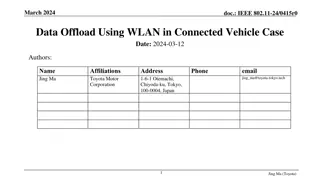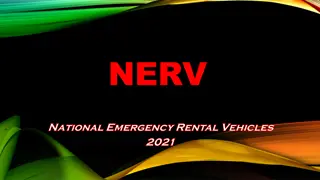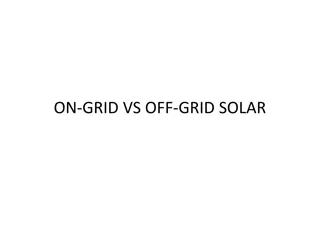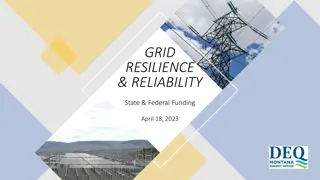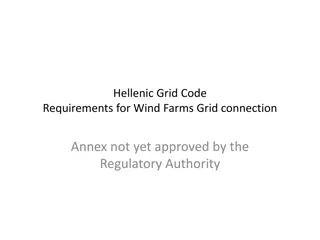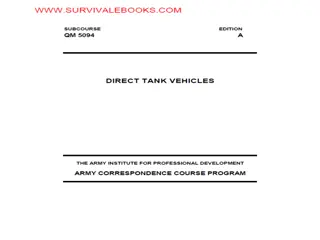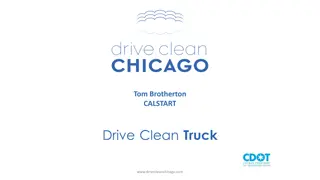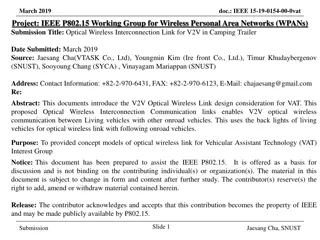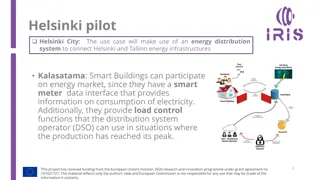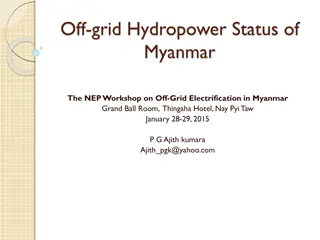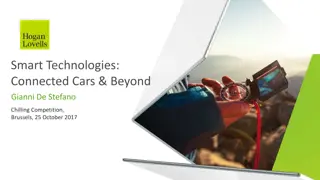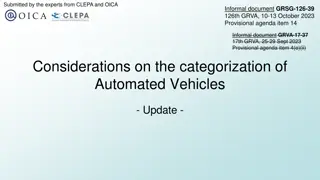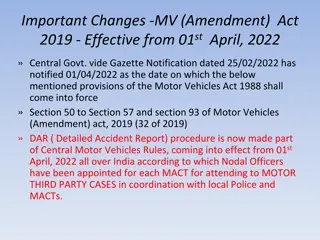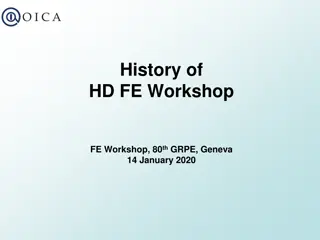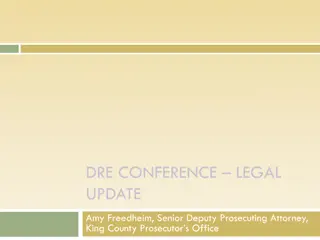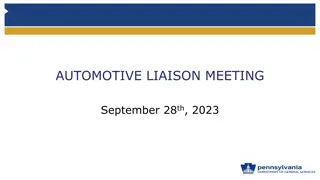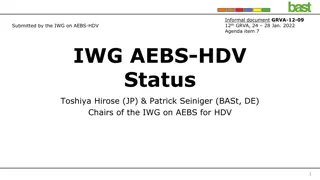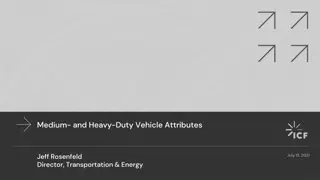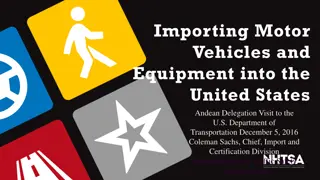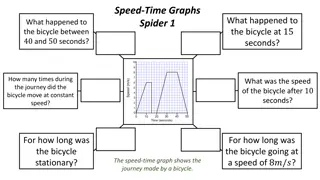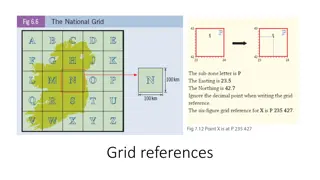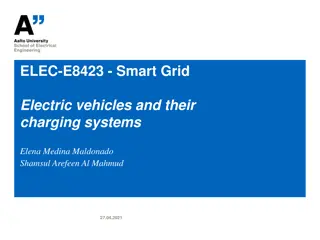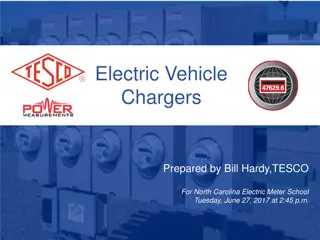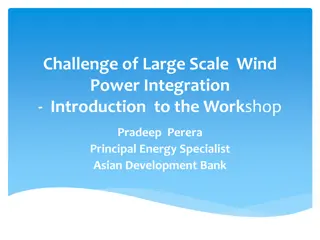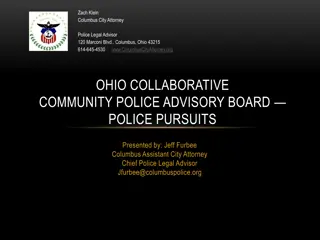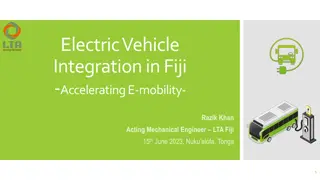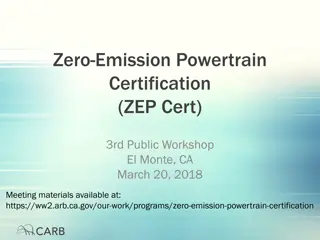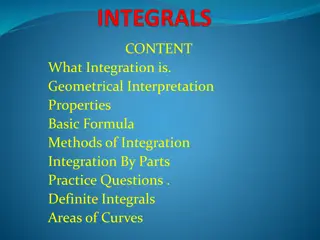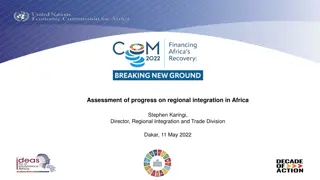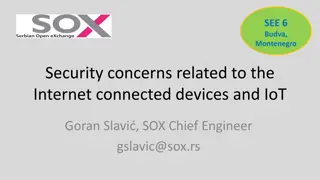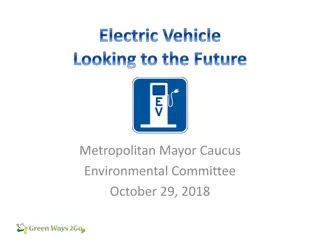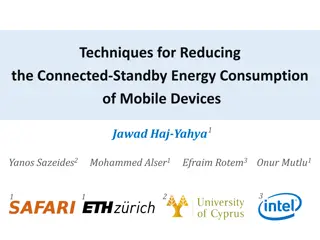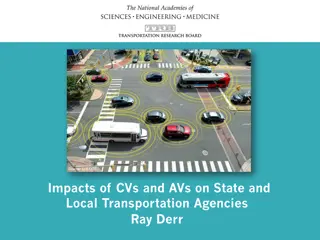Workshop on Vision of Grid-Connected Vehicles and Vehicle-Grid Integration
This workshop, led by Jonn Axsen and Nicol Daina, explores the visions and strategies for grid-connected vehicles and vehicle-grid integration. It delves into the benefits, risks, societal implications, and policy requirements of various VGI visions. Experts discuss consumer perceptions, business prospects, and the importance of a socio-technical perspective in achieving deep GHG reductions by 2050. The event aims to foster collaboration and understanding among stakeholders in the transportation and electricity sectors.
Download Presentation

Please find below an Image/Link to download the presentation.
The content on the website is provided AS IS for your information and personal use only. It may not be sold, licensed, or shared on other websites without obtaining consent from the author. Download presentation by click this link. If you encounter any issues during the download, it is possible that the publisher has removed the file from their server.
E N D
Presentation Transcript
1 Visions of grid-connected vehicles: What is the goal and how do we get there? Facilitators: Jonn Axsen Associate Professor, Simon Fraser University Director, Sustainable Transportation Action Research Team (START) Nicol Daina Research Associate, CTS, Imperial College London January 8, 2017, Washington DC
Vehicle-Grid Integration (VGI) A definition: efforts to intelligently plan the linkages and synergies between the transportation and electricity sectors. VGI visions can include different ideas of: Flow V1G: unidirectional flow (control, delay, optimize charging) V2G: bidirectional flow (vehicle can charge, store, discharge) Mechanisms of engagement Time-of-use pricing, opt-in programs, revenue sharing, education Vehicle types Plug-in hybrid (PHEV) and pure battery electric (BEV) Vehicle classes Light-duty, medium-heavy duty, private, passenger, freight, car- sharing, automation
Agenda 1:30 Welcome and introduction by Drs. Jonn Axsen and Nicol Daina 1:35 Session 1: VGI visions for the climate, society and consumers Facilitated by Jonn Axsen 1.Benjamin Sovacool, University of Sussex, United Kingdom 2.Patrick Jochem, Karlsruhe Institute of Technology, Germany 3.Nicol Daina, Imperial College London, UK 4.Michael Wolinetz, Navius Consulting, Canada 5.Jeremy Michalek, Carnegie Mellon, USA 2:55 Break (15 min) 3:10 Session 2: VGI visions for business: perspective and prospects Facilitated by Nicol Daina 1.Willet Kempton, University of Delaware, USA 2.Timothy Lipman, UC Berkeley, USA 3.Scott Baker, PJM Interconnection, USA 4.Gegory Poliasne, Nuvve, USA 5.Adam Langton, BMW North America, USA 6.jonn Axsen, Simon Fraser University, Canada, 4:30pm end
Vehicle-Grid Integration (VGI) This workshop encourages a socio-technical perspective, including technical, economic, political, environmental and behavioural aspects. We ask speakers to address these questions: What are the benefits and risks of different VGI visions? What vision(s) is best for society? What policies (if any) are required to get there? Is there a business case for grid-integrated vehicles? What is the role of consumer behaviour?
5 Consumer perceptions of VGI: Will the Mainstream 'get it ? Jonn Axsen Associate Professor, Simon Fraser University Director, Sustainable Transportation Action Research Team (START) January 8, 2017 VGI Workshop TRB 2017 Washington DC
My VGI focus and insights Vision of focus: Target: Deep GHG reductions (80% by 2050), reasonable costs, strong policies needed to get there I ve been focused more privately owned passenger vehicles To engage the Mainstream consumer: Keep it simple: vehicles and VGI program
Big differences between PEV Pioneers and the potential Mainstream PEV Pioneers (early buyers) Potential Early Mainstream PEV buyers New vehicle buyers Later Mainstream ? 7 Passenger Vehicle Owners
8 Mainstream has low awareness of PEVs (Hybrid) (Plug-in Hybrid) (Pure electric) Source: Axsen, Goldberg and Bailey (2016), Transportation Research Part D
9 Mainstream has low awareness of VGI Semi-structured interview with 21 Mainstream households in Metro Vancouver The majority of households (14 or 21) had trouble understanding the idea of VGI: That gets pretty complicated -- Andreas [seems] futuristic Clair Oh god! Christine (in confusion) Source: Axsen, Langman & Goldberg (Under Review), Energy Research & Social Science
10 Consumers are varied in their motives Functional Symbolic Private Societal Source: Axsen and Kurani (2012), Environment and Planning A
11 Consumers are varied in their motives Functional Symbolic What it does for you What it represents Source: Axsen and Kurani (2012), Environment and Planning A
12 Consumers are varied in their motives Functional Symbolic Private What it does for you What it represents What it does for society What it says to society Societal Source: Axsen and Kurani (2012), Environment and Planning A
Different consumer segments have different priorities for VGI enrollment PEV Pioneers Early Mainstream Renewable Focused 17% Anti-UCC 21% Anti-UCC 35% Cost Motivated 28% Renewable Focused 65% Charge Focused 34% Privacy concerns Negative WTP for green Source: Bailey and Axsen (2016), Transportation Research A
Simulations of VGI enrollment rates vary by program design Early PEV Mainstream Enrollment PEV design Anti-UCC Baseline (No renewables, no savings) 53% Charge Focused Cost Motivated Renewable Focused Anti-UCC 20% Bill Savings 100% GMC Charge Focused 70% Cost Motivated Renewable Focused Anti-UCC 20% Bill Savings 80% GMC Charge Focused 61% Cost Motivated Renewable Focused Anti-UCC 100% Renewables 100% GMC Charge Focused 57% Cost Motivated Renewable Focused Anti-UCC 100% Renewables 80% GMC Charge Focused 46% Cost Motivated Renewable Focused 0% 20% 40% 60% 80% 100% Percentage of respondents choosing UCC Source: Bailey and Axsen (2016), Transportation Research A
VGI and the potential Early Mainstream PEV buyers Mainstream consumers are 1. Generally confused 2. Once explained, generally supportive (especially with renewables) 3. but when set of as a tradeoffs (choice experiment), cost and convenience attributes win 4. Trust will be an important factor for some
Mainstream: everybody loves Green Oppose Support Coal Nuclear Biomass Natural Gas Large Hydro Run-of-river Geothermal Wind Solar -80% -60% -40% -20% Percentage of Sample 0% 20% 40% 60% 80% 100% Source: Bailey and Axsen (2016), Transportation Research A
All groups: Wont accept much inconvenience Minimum charge on any given morning. Percentage of respondents that would accept this GMC every day Maximum amount that might be missing due to VGI Mainstream Pioneers 43% 37% 90% Charged In a morning 10% 18% 18% 75% Charged In a morning 25% 6% 3% 50% Charged In a morning 50% Source: Bailey and Axsen (2016), Transportation Research A
Comparing Pioneer and Mainstream awareness of PEVs
Important barriers to PEV sales Potential (Latent) Demand for PEV's Only buyers that are "familiar" Only those with home charging access Lack of PEV variety (makes/models) Constrained forecast, without substantial policy ~1% market share Lack of PEV availability (dealerships) 0% 5% 10% 15% 20% 25% 30% 35% PEV market share (2020) Source: Wolinetz and Axsen (forthcoming)
A framework for consumer engagement with VGI Source: Axsen et al. (2015), Electrifying Vehicles
24 Two perspectives 1) PEVs and VGI are inherently awesome and will dominate, no problem!!! 2) PEVs and VGI have some advantages, but strong policy is needed to overcome: Negative externalities (GHGs, air pollution) Innovation externalities (R&D spillovers) Transformative failures (directionality failure and reflexivity failure) Source: Melton, Axsen & Sperling (2016), Nature Energy



